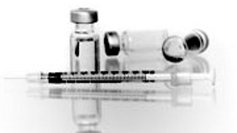Signs and Symptoms of Morphine Abuse

Morphine is the classic opiate painkiller, the standard by which other opiates are measured. While other opiates are more often the drug of choice of opiate addicts, morphine in pill or liquid form is still sought to satisfy cravings.
When a person is either abusing morphine or even taking it properly, they are likely to be constipated. All opiates tend to slow down the ability of the body to eliminate solid wastes so some people on painkillers seek medications that will help them fight constipation. Opiates tend to make a person nauseated and they may vomit after taking the drug. Opiates slow breathing, which is what usually kills a person who has taken too much of the drug. A person on these drugs tends to be sleepy and they may dope off.
There are certain symptoms that mean that a person may have taken too much morphine.
These include:
- Shallow breathing—it may feel like the person’s chest is barely moving and there may be few breaths each minute
- Feeling faint or dizzy
- Confusion
- Low blood pressure, especially when a person is also taking other medications that cause a drop in blood pressure
- Constricted pupils
- Loss of normal muscle tension
- Cardiac arrest
- Cold and clammy skin
- Circulatory collapse
- Coma
Morphine: What to Look For

If a person is abusing morphine, in addition to physical symptoms of abuse, you may find pill bottles or pills or syringes. Morphine also comes in a liquid form so you may find small bottles of morphine sulfate liquid. There are dozens of different pills and capsules that contain morphine. By brand name, Avinza® capsules are half white and the other half may be blue, dark green, light blue, yellow or red. Kadian® capsules are all one color and may be light blue, turquoise, purple, brown or pink, depending on the dosage. MS Contin® are small round pills in gray, light blue, purple, or orange. Oramorph® SR (sustained release) are round white pills but may also be supplied in a patch. Generic morphine comes in a variety of colors and shapes.
A person using morphine according to a doctor’s instruction can still become addicted to the drug, sometimes in a little as a few weeks.
If he (or she) tries to discontinue the morphine, he will manifest some or all of these signs of withdrawal that are common to opiates:
- Sweating
- Chills
- Tearing eyes
- Runny nose
- Restlessness
- Muscle aches
- Backache
- Dilated pupils
- Irritability
- Trouble sleeping
- High blood pressure
- Rapid heart rate
- Vomiting
- Diarrhea
- Stomach cramps
Some people who have been taking morphine a little while may go through these symptoms briefly and think that they have come down with the flu. This may happen when a person comes out of the hospital for treatment of an injury for which they received morphine. In actual fact, they are going through opiate withdrawal.
Morphine During Pregnancy
A woman taking morphine while she is pregnant is likely to cause her baby to be born addicted to this drug.
Infants going through morphine withdrawal will show the following signs:
- The baby may have trouble breathing right after birth
- They will be irritable and inconsolable
- They will sleep poorly and be very active
- They may shake with tremors and have a high-pitched cry
- They may have difficulty growing and gaining weight due to diarrhea and vomiting
- They may run fevers
Leaving Morphine Addiction Behind
Opiate addiction is a cruel master as the drugs cause strong cravings, strong enough to drive a person to commit acts he (or she) would never otherwise commit. A family may be torn apart as a person’s true personality becomes hidden by the compulsions and manipulations required to continue the addiction. Unless a rehab program addresses the damage done by an addiction to morphine or other opiates, each try at achieving sobriety may end in relapse.
The Narconon drug rehab program has isolated the points where a person experiences damage, such as loss of personal integrity, dim perceptions, cloudy thinking, inability to communicate clearly and honestly, and loss of the ability to successfully deal with problems in life. Step by step, the Narconon program addresses each point with effective program features. It takes longer than the 28 days of most short-term programs to bring about a real recovery from morphine addiction.
This is an innovative program that works. The program works because it has everything to do with the ability to restore personal integrity and brightened perceptions. It also has to do with the life skills-training that teaches a person how to make healthy decisions and stay away from negative influences.
Another necessary component of the recovery is the Narconon New Life Detoxification, one phase of the overall recovery program. This action combines time in a sauna with a strict nutritional regimen and moderate daily exercise. This combination triggers the body’s ability to flush out old drug toxins. As the toxins leave, those in recovery talk about how much better their outlook is and how their thinking is clearer.
Step by step, building a sound, sober future has been the job of Narconon for over 50 years. Find out how it can benefit someone you care about.
See Also:
Resources:
